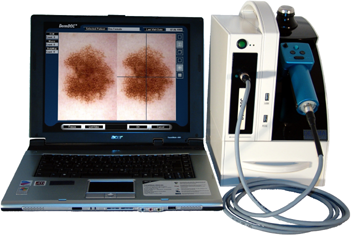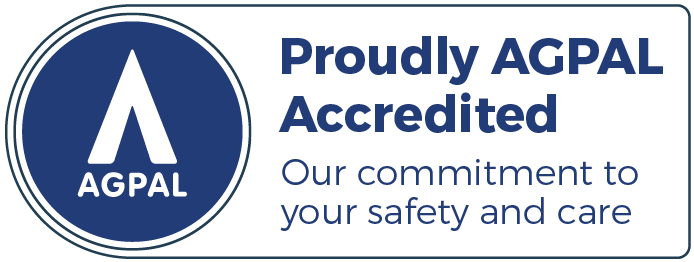MoleXam Skin Clinic
Australia has the world’s highest incidence of skin cancer.
Skin cancer is the most common cancer in Australia. Australians are four times more likely to develop a skin cancer than any other form of cancer.
Skin Cancer Checks & Treatments
Haly Health & Skin Medical Centre provides the highest quality treatments to promote skin health in an informed, caring & professional environment. Our staff are passionate about the service and treatments provided to clients. We aim to tailor the client’s services to meet their individual needs to achieve the best outcome & results.
Experience a specialised service that will exceed your expectations. We are mindful of the clients overall experience and are committed to creating caring experiences — every client, every time.
Repair the Past!
Over the years, we accumulate sun damage to our skin. 80% of this damage occurs before we turn 18 years old. Solar Damaged skin is more susceptible to cancers such as Basal Cell Carcinoma, Squamous Cell Carcinoma and Melanoma, to name the most common ones. Cancers of the head and neck are the most dangerous as they have the highest incidence of spreading to our glands and other body organs such as the liver, lungs and long bones. However, it’s never too late to start looking after your skin andturn back the clock on some of the damage that has been done.
Protect the Present!
Recent skin health studies have shown that looking after your skin dramatically decreases your chance of getting skin cancers. The promotion of healthy skin cells allows them to identify the unhealthy cells and prevent them from growing further. As the body naturally ages the skin cell rejuvenation process slows down. With the use of chemical and manual exfoliation, we can help the regeneration of skin cells to promote natural rejuvenation.
The naked eye cannot always see the amount of damage to the skin which is why advanced technology such as a dermatoscope and a skin surface analyser allow us to look under the layers of the epidermis into the dermis to accurately assess the damage.
Prevent the Future!
Continue to prevent skin damage by cleansing, exfoliating, repairing, protecting and monitoring. Looking after the biggest organ in our body should be one of our main priorities.Regular skin checks will allow damaged areas and cancers to be picked up and managed accordingly. If you have never had a skin cancer before we recommend a skin check every year.
Regular Slip! Slop! Slap! Seek! Slide! will always be an imperative measure in skin protection.
A regular skin maintenance regime is also imperative to keeping your skin healthy. Regular cleansing, exfoliating and SPF moisturising of the skin helps to keep the skin healthy, youthful and vibrant.
About MoleXam
Consultations
The first step involves a thorough skin consultation. During the consultation, the Doctor uses a high definition camera known as a MoleMax Dermatascope to magnify lesions to adequately assess their characteristics to identify what kind of lesion it is. This allows accurate diagnosis and can be used as a tool for monitoring changing or suspicious lesions.
Limited Skin Checks are available upon request however a full examination is always recommended.
Skin Consultations do not always focus on Skin Cancers. Other Skin conditions that are managed at the clinic are Acne, Rosacea, Eczema, Dermatitis and Psoriasis to name a few.
MoleXam consultations incur a bi-annual fee however follow-up monitoring and excisions are bulk billed; with the exception of Cosmetic Mole Removal.
Skin Biopsies
At Haly Health & Skin Medical Centre all lesions of concern are sent away for histological analysis to confirm and/or identify the type of skin cancer.
Biopsies are usually in the form of a shave biopsy where a small amount of local anaesthetic is injected into the area and the biopsy is performed. For the most part, these shallow biopsies do not scar however there are exceptions if a deeper biopsy is required.
Other types of biopsies include punch biopsies where a single suture is used to close the site or an excision biopsy where a lesion may need to be cut out entirely for further examination.
Why does the doctor not cut it out there and then?
Formal diagnosis needs to be established to determine the correct method for treating the lesion.
Getting Results of Skin Biopsies
Results take up to a week and we ask that you call us to get your results. If you don’t call us and you do require a follow up, we will phone you but it speeds up our recall system if you do call us.
If you have a biopsy taken and it comes back with a clear result but does not settle or heal following the biopsy, please come back to us for a review of the area of concern. This can be a sign that further investigation is necessary.
If you are diagnosed with a skin cancer you will be recalled for further management of the lesion.
Excisions & Further Management
There are different methods for treating skin cancers. If the lesion is excised, the procedure is bulk billed.
All excised lesions are again sent away for further histological analysis. This confirms that the lesion has been excised in its entirety.
Another treatment option is electrodesiccation of the lesion if it is still in an early or superficial stage in some cases. The machine used causes dehydration of the cells to essentially peel away the skin cancer.
Liquid Nitrogen should only be used on carefully selected lesions. Inappropriate use of Liquid Nitrogen can cause skin cancers to spread.
Alternative treatment options are available such as prescribed creams or PDT (Photodynamic Therapy). There are associated costs with these options. The best treatment options for managing your skin cancers and other related conditions will be discussed.
We encourage open communication between the patient and the doctor.
Follow Up
We are committed to making sure your skin is as healthy as it can be.
After your Skin Scan, routine check ups are encouraged. Routine scans are usually performed every 12 months unless a previous skin cancer has been identified.
In the event of a previous skin cancer, routine skin checks should be performed every 3 to 6 months depending on the type of skin cancer.
If a lesion of concern appears before your routine scan is due, we strongly recommend that you contact the clinic for a spot check.
Self Examinations
Self examinations are important so that you can easily identify new or changing lesions so that you can bring them to the attention of the Doctor. Identifying lesions early on allows for prompt treatment and better outcomes.
Photo Reviews
From time to time, a lesion may look slightly suspicious but not be ominous enough to biopsy or excise straight away. In the event of this occurring, the Doctor will take comprehensive imaging of the lesion and generally monitor it for 3 months. At this time, you will be required to come in for further comparison imaging to identify any changes. Should there be any changes, a biopsy is required. If no changes are seen, the lesion will continue to be monitored inline with your routine skin scan.
Cosmetic Mole Removal
Cosmetic Radio-surgery allows the removal of cosmetic skin lesions, including moles, raised lesions, skin tags, warts and skin surface irregularities on the face and body with virtually no risk of scarring.
All treatments are performed by our experienced on premise Doctor.


OPENING HOURS
Monday: 8.00am – 4.00pm
Tuesday: 8.00am – 4.00pm
Wednesday: 8.00am – 4.00pm
Thursday: 9.00am – 4.00pm
Friday: 8.00am – 2.00pm (Subject to doctor availability)
Public Holidays – Closed

WHERE ARE WE
240 Haly Street
Kingaroy QLD 4610
Ph: 07 4162 7787
Fax: 07 4162 7786
reception@halyhealth.com.au
This is a private billing practice.
MoleXam consultations incur a bi-annual fee however follow-up monitoring and excisions are bulk billed; with the exception of Cosmetic Mole Removal.
Types of Skin Cancers
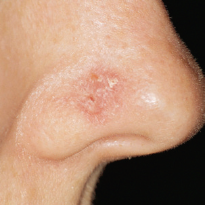
Basal cell carcinoma (BCC)
BCC accounts for about 70% of non-melanoma skin cancers. It begins in the lower layer of the epidermis (top, outer layer of the skin). It can appear anywhere on the body but most commonly develops on parts of the body that receive high or intermittent sun exposure (head, face, neck, shoulders and back).
Basal cell carcinoma symptoms
BCC often has no symptoms and tends to grow slowly without spreading to other parts of the body.
Symptoms of BCC may include:
- a pearly lump
- a scaly, dry area that is shiny and pale or bright pink in colour.
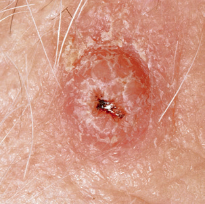
Squamous cell carcinoma (SCC)
SCC accounts for about 30% of non-melanoma skin cancers. It begins in the upper layer of the epidermis and usually appears where the skin has had most exposure to the sun (head, neck, hands, forearms and lower legs). SCC generally grows quickly over weeks or months.
Squamous cell carcinoma symptoms
Symptoms of SCC may include:
- thickened red, scaly spot
- rapidly growing lump
- looks like a sore that has not healed
- may be tender to touch.
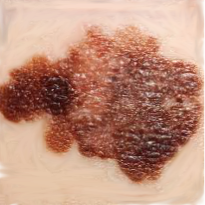
Melanoma
Melanoma is a type of skin cancer which usually occurs on the parts of the body that have been overexposed to the sun. Rare melanomas can occur in parts of the skin or body that have never been exposed to the sun.
Melanoma is the fourth most common cancer diagnosed in Australia, which along with New Zealand has the world’s highest incidence rate for melanoma. Melanoma is more commonly diagnosed in men than women. The risk of being diagnosed with melanoma by age 85 is 1 in 13 for men compared to 1 in 22 for women.
* SOURCE – CANCER COUNCIL ~ cancer.org.au
240 Haly Street, Kingaroy Q 4610
Phone: 07 4162 7787
Fax: 07 4162 7786
Email: reception@halyhealth.com.au
Monday: 8.00am – 4.00pm
Tuesday: 8.00am – 4.00pm
Wednesday: 8.00am – 4.00pm
Thursday: 9.00am – 4.00pm
Friday: 8.00am – 2.00pm (Subject to doctor availability)
Public Holidays – Closed
Forms & Downloads
Patient File Transfer Form
Patient Survey Form
Practice Consultation Fees


